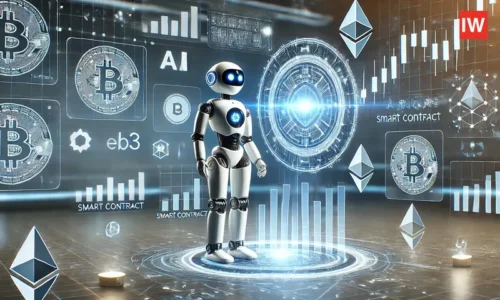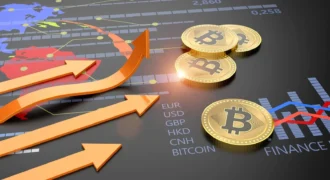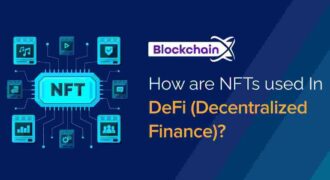In the fast-paced world of cryptocurrency, speed and precision can mean the difference between profit and loss. As markets move 24/7, human traders simply can’t monitor every price fluctuation, trend, or opportunity. Enter AI trading bots — intelligent, data-driven programs designed to trade automatically, learn from patterns, and execute strategies faster than any human ever could.
But with automation comes the big question: are AI trading bots a guaranteed path to profit, or a risky gamble wrapped in high-tech appeal?
The Rise of Automated Crypto Trading
Automation isn’t new to financial markets. Wall Street firms have used algorithmic trading for decades to maximize gains and minimize human error. However, the rise of cryptocurrency trading, with its volatility and decentralized nature, has given automation a new frontier — and AI-powered bots are leading that revolution.
Unlike simple trading scripts, AI bots use machine learning, natural language processing, and predictive modeling to make smarter decisions. They analyze market data in real time, identify patterns, adapt to changing conditions, and even refine their own strategies over time.
Platforms like Bitget, Binance, and Coinbase now integrate with AI-driven trading bots, giving both novice and professional traders access to automation tools that once required deep coding knowledge or institutional-grade infrastructure.
How Do AI Trading Bots Work?
At their core, AI trading bots follow a simple principle: analyze, decide, and execute.
Here’s how they typically operate:
- Market Data Analysis – Bots continuously scan market prices, volumes, order books, and sentiment data across exchanges. Some even integrate news feeds or social media data to gauge public mood.
- Signal Generation – Using machine learning models, the bot identifies buy or sell opportunities based on past patterns, price correlations, and market momentum.
- Risk Management – Advanced bots include stop-loss mechanisms, portfolio diversification, and position sizing algorithms to protect against sudden market swings.
- Trade Execution – Once conditions match a predefined strategy, the bot executes the trade instantly — often within milliseconds.
Over time, machine learning algorithms “learn” from both successful and failed trades, refining their approach to minimize errors and optimize profit potential.
Why Traders Are Turning to AI Bots
There are several reasons why AI trading bots have gained massive popularity among crypto enthusiasts:
1. 24/7 Market Monitoring
The crypto market never sleeps, but traders do. AI bots can monitor the market day and night, identifying profitable entry and exit points even while you’re asleep.
2. Data-Driven Decisions
Unlike human traders swayed by emotion, bots make purely data-based decisions. They don’t panic sell, get greedy, or chase losses — a major advantage in volatile markets.
3. Speed and Precision
Bots can process data and execute trades at lightning speed — far faster than any human could react to a sudden market swing.
4. Backtesting Capabilities
Before deploying strategies, traders can use bots to backtest their algorithms on historical data, refining performance before going live.
5. Accessibility
You no longer need to be a programmer to use trading bots. Many platforms now offer AI-powered bots with user-friendly interfaces and pre-built strategies, making them accessible to retail traders worldwide.
The Flip Side: Risks of AI Trading Bots
For all their promise, AI trading bots are not foolproof. Automation introduces its own set of challenges — and sometimes, expensive mistakes.
1. Over-Optimization and Bias
AI bots can fall prey to “overfitting” — optimizing for past data so precisely that they fail to adapt to new market conditions. When real-world volatility hits, these bots can stumble.
2. System Failures and Technical Glitches
A single line of faulty code or a server downtime can trigger major losses. Even the best bots require constant monitoring and maintenance.
3. Market Manipulation Risks
Some malicious actors deploy trading bots to artificially inflate or suppress prices — a phenomenon known as wash trading. Unsuspecting bots following these signals may end up executing bad trades.
4. False Sense of Security
Relying solely on automation can create a dangerous illusion of safety. Even the smartest AI cannot predict black swan events, regulatory changes, or market sentiment shifts driven by human psychology.
5. Subscription Costs and Hidden Fees
Most premium AI bots charge monthly fees or take a cut from profits. Without careful cost-benefit analysis, traders might end up paying more than they earn.
Profit or Risk: Striking the Balance
So, where does the balance lie? The answer depends largely on how the bot is used. AI bots can be incredibly profitable when deployed strategically — but they’re not “set-and-forget” money machines.
To maximize profits while managing risks, traders should:
- Start Small: Begin with a limited investment until you understand how your bot behaves in different market scenarios.
- Customize Strategies: Avoid relying on generic templates. Tailor parameters to match your goals and risk tolerance.
- Monitor Performance: Regularly review bot activity and adjust for changing market conditions.
- Combine Human Oversight: Use bots as analytical assistants, not replacements for critical human judgment.
- Stay Informed: Market conditions evolve, and so should your strategy. AI can help, but knowledge remains the best defense against losses.
Real-World Use Cases: From Hedge Funds to Retail Traders
In traditional finance, hedge funds like Two Sigma and Renaissance Technologies have long leveraged AI for algorithmic trading. In crypto, platforms like 3Commas, Kryll, and Pionex bring similar tools to everyday traders.
For example:
- Pionex offers 16 free built-in bots, including grid and arbitrage strategies.
- 3Commas uses AI to optimize take-profit and stop-loss combinations.
- Bitget’s AI trading integration allows users to automate trades based on advanced signals while maintaining transparency and control.
The takeaway? AI trading is no longer limited to institutions — it’s democratized, giving individual traders the tools once reserved for Wall Street elites.
The Future of AI Trading in Crypto
The next generation of AI trading bots won’t just execute orders; they’ll predict trends, learn from user preferences, and adapt to global economic shifts. Integration with blockchain technology could even make trading bots decentralized, transparent, and tamper-proof.
We may soon see self-learning DeFi bots, capable of optimizing yield farming strategies or navigating liquidity pools automatically — ushering in a new era of “autonomous finance.”
However, as AI grows more sophisticated, regulatory oversight will become crucial. Questions around accountability, transparency, and fairness will shape the future of AI-driven trading just as much as technology itself.
Final Thoughts
AI trading bots represent both the promise and peril of automation in the crypto world. They can transform how we trade — unlocking efficiency, speed, and insight — but they also demand responsibility, strategy, and vigilance.
In essence, AI bots amplify the trader’s strengths but can just as easily magnify their weaknesses. Success lies not in replacing the human mind but in partnering with the machine intelligently.
In the crypto markets of tomorrow, the most successful traders may not be those who trade faster — but those who think smarter, blending human intuition with artificial intelligence.










